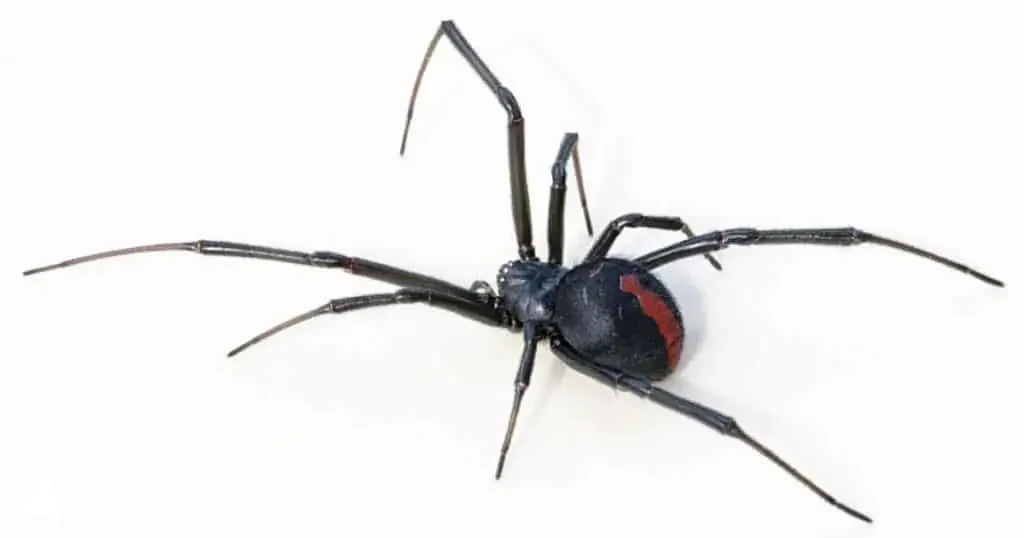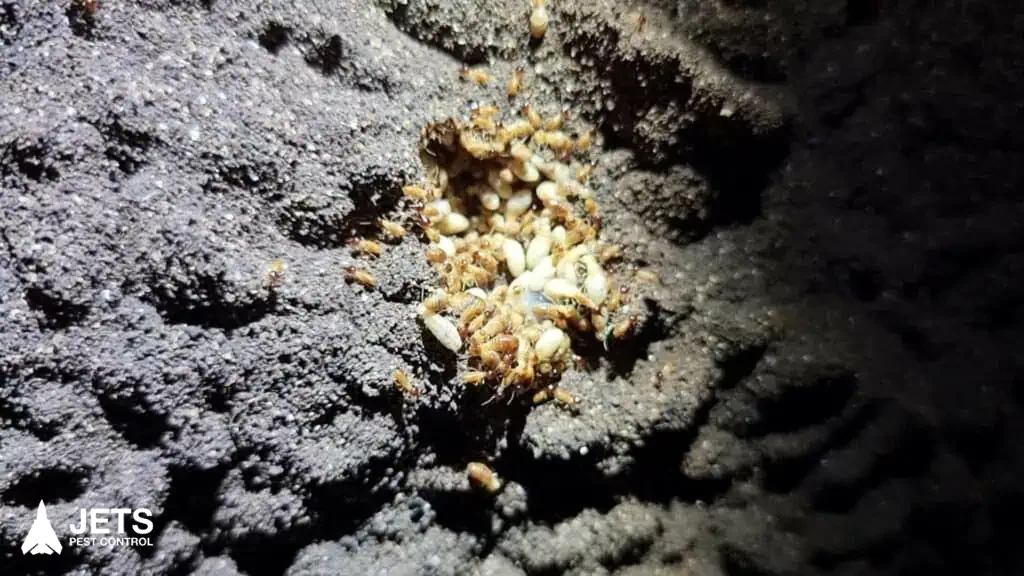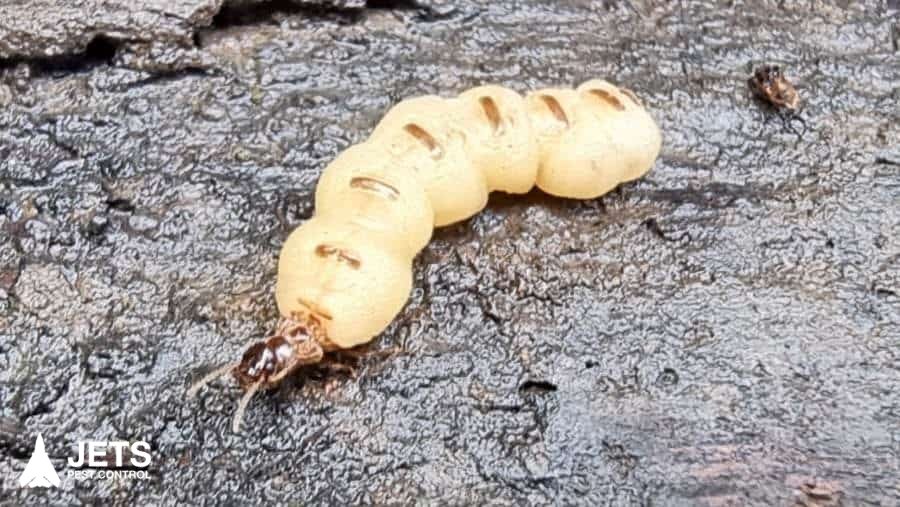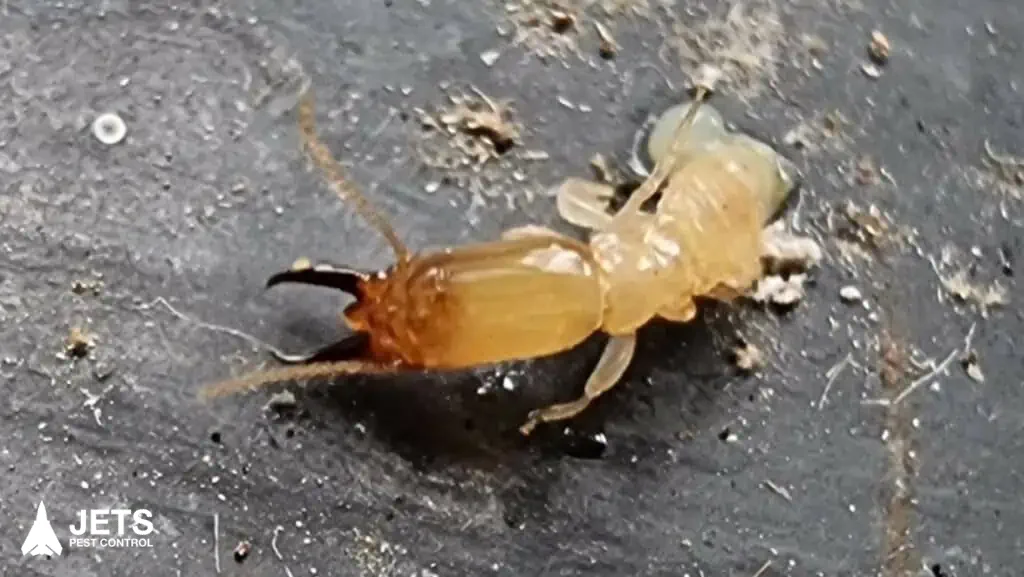Redback Spiders
Scientific name: Latrodectus hasselti
Alternative name/s: Red-back Spider
Similar species: Grey House Spider, Cupboard Spider
Introduction
Redback spiders are highly venomous spiders believed to originate in South Australia or adjacent Western Australian deserts. Still, they are now found throughout Australia, Southeast Asia and New Zealand, with colonies outside Australia.
Redback Spider Identification
Redback Spiders are in the Family Theridiidae. This family is found worldwide. The Black Widow Spiders of the USA are a relative of Redback Spiders and only differ by not having a red stripe on their back. Other spiders in the Latrodectus family occur in Africa, New Zealand, Pacific Islands, Europe and North America.
Female Redback Spiders are black with an orange or red stripe on the top of their stomach. Sometimes the streak is broken, and they have an “hourglass” shaped red/orange spot on the bottom of their abdomen. They are about as big as a large pea, but they have skinny legs.
Male redback spiders have less red on their body. It is light brown, and the white markings are on the top of their abdomen. There is a pale hourglass with dark lines that can be seen when they turn over.

Redback Spider Habitat
Redback spiders make tangled webs that are like tunnels. The web has sticky threads going down to the ground. They like to live close to humans, and they build their webs in places like rocks, logs, or sheds. They are less common in the cooler winter months around homes and yards.
Redback Spider Distribution
Redback spiders are found across Australia. They can live anywhere. If they have food, shelter, and it’s warm enough for breeding, then they will be happy. They are most often found in areas that people live in, like near buildings or near homes.
Feeding and diet
Insects are the food of choice for Redback Spiders. They can also eat animals like trapdoor spiders, crickets and lizards if they get stuck in a web. Stealing prey from other spiders is common. Sometimes an enormous female Redback spider can take another spider’s food stored from their web.
Life history cycle
After mating, a female spider can keep sperm from the male and use it for two years to lay eggs. She will create a sac with about 250 eggs every few weeks, which is about the size of a small 5 cent coin. The egg sacs are white at first but turn brown after time. Sometimes tiny ichneumonid wasps will destroy the egg sacs by puncturing them with holes. The spiderlings will hatch in between two and four weeks. Some spiderlings will eat unhatched eggs and other spiderlings. In time, the spiderlings will move to a new home using long silk threads that catch the wind and fly them away.
Redback spider males and females reach maturity at different rates. The females mature in about four months, whereas males take up to 90 days. The females live for about two to three years, but males only live for six or seven months.
Breeding behaviours
Male Redback spiders do not make webs, but they might go to the edge of a female’s web during mating season in Summer. The male has to try to get the female’s attention so she will mate with him. It is dangerous if she mistakes him for food and eats him while mating. So while mating, he stands on his head and somersaults to turn over his stomach towards her mouthparts. She squirts digestive juices on his abdomen while the first palp is inserted. If a male is not too weak, he can withdraw and insert the second palp. The female will continue to digest his abdomen. Most males do not survive the mating process, but it only seems to happen with Latrodectus hasselti.
Predators
It is a well-known fact that Daddy-Long-Legs Spiders and White-Tailed Spiders are deadly to Redback Spiders.
Danger to humans
Redback spider bites often happen in the summer. About 250 people get antivenom each year. Sometimes people don’t feel it, so they might not report it. Only the female bite can be dangerous and has caused deaths in the past. However, redback spiders are rarely outside their webs. People are seldom bitten unless they put their hands on the web. Their small jaws mean that many bites do not work. The venom acts on people’s nerves causing the release and depletion of neurotransmitters in your body.
Redback spider bite symptoms include:
- Mild to severe pain at the bite site.
- Sweating, including at the bite site.
- Loss of coordination and muscular weakness.
- Nausea and vomiting can happen.
If a Redback spider bites you, there is antivenom. No one has died since it was created. You can reduce the pain with an ice pack. Do not apply pressure to the area because that will make the pain worse. Collect the spider if you can do so safely for identification purposes and go to a doctor right away.
Evolutionary relationships
Scientists once thought that the Redback Spider Latrodectus hasselti was a subspecies of the Black Widow Spider, but new information shows that they are different. The research on DNA sequences of all recognised Latrodectus species indicates that the Redback spider is probably an Australian native and closely related to the New Zealand Katipo. Redback spiders have likely become more common since European settlers provided them with many places they like, such as abandoned buildings for webs.
Quick Facts
- Species: hasselti
- Genus: Latrodectus
- Family: Theridiidae
- Order: Araneae
- Class: Arachnida
- Phylum: Arthropoda
- Kingdom: Animalia
- Size range: 1 cm (female) and 3 mm to 4 mm (male)
- Habitats: peridomestic, pest
- Life history mode: sedentary
- Feeding Habits: arthropod-feeder, carnivorous, insectivorous, predator
How to get rid of Redback Spiders
If you’ve been finding redback spiders around your home, then it may be time to contact a professional pest controller. Redback spiders are found throughout Australia and can be very robust hunters living in leaf litter or burrows. They are often found in sheds and near pool pumps, so if they have invaded your home, give us a call Jets Pest Control Ipswich on 1300 566 569 for help with getting rid of them today!



